Radish kimchi or kkakdugi is another classic kimchi and popular side dish just like napa cabbage kimchi. There are actually a couple different versions of kkakdugi and this is the most popular version made with diced Korean radish. You'll find radish kimchi often served with Korean soups like samgyetang (Korean ginseng chicken soup) and seollentang (ox bone soup), but it's also commonly paired with jajangmyeon (Korean black bean noodles) and japchae (Korean glass noodle stir fry). Follow along our step by step guide with photo reference to make your own radish kimchi!

If you’ve made this recipe or any recipes from our blog, please tag us on Instagram using #twoplaidaprons! You can also tag us in your Instagram stories using @two_plaid_aprons. We would love to see your creations! It absolutely makes our day! 🥰
Jump to:
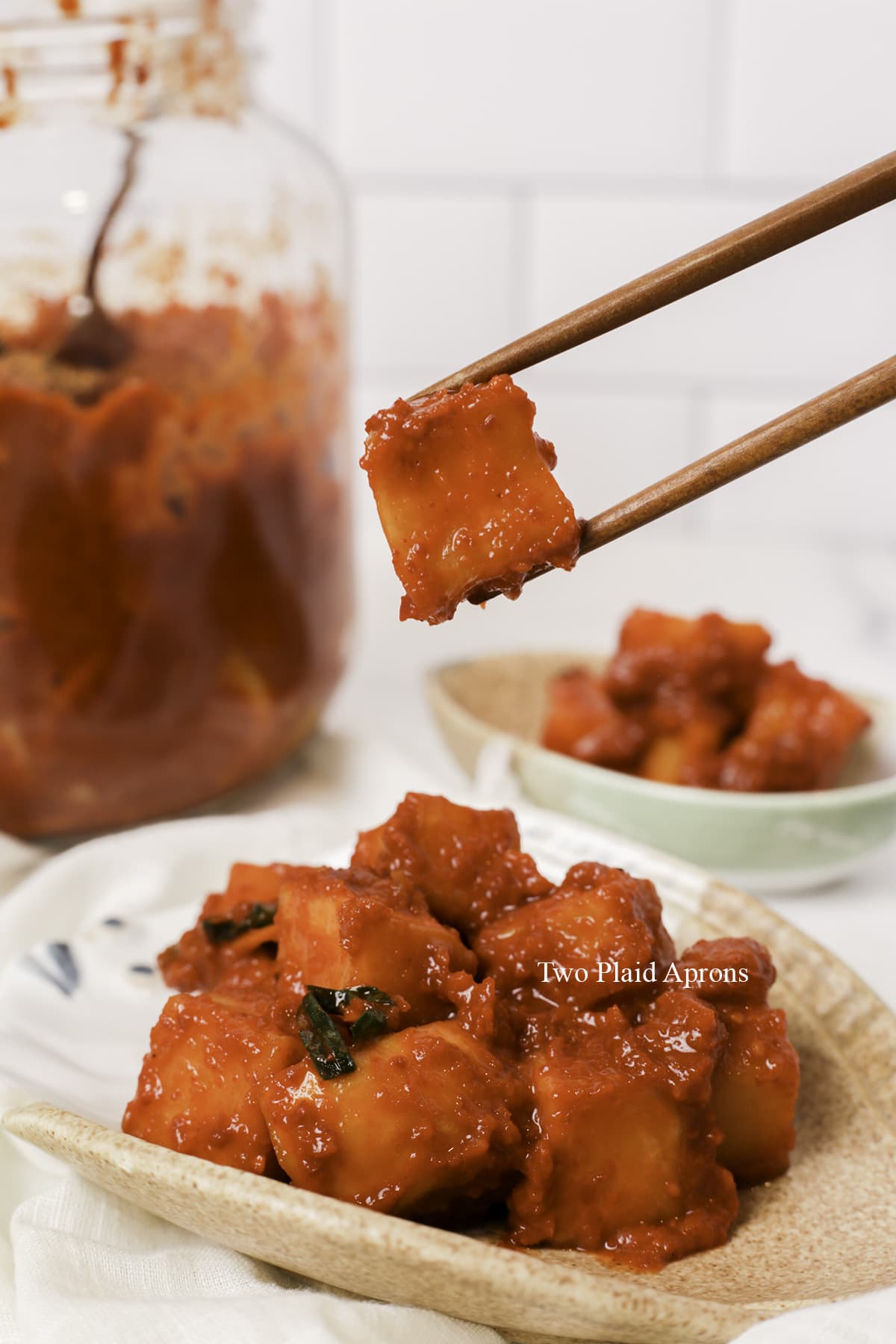
What to eat with radish kimchi
Radish kimchi, just like other banchan (aka side dishes), can be enjoy it as part of daily meals with white rice or Korean purple rice, an egg dish like gyeran jjim (Korean volcano steamed egg) and doengjang jjigae (Korean soybean paste stew). Radish kimchi is also specifically served with these Korean dishes to add texture and, oddly enough, also to serve as a palette refresher with its tang and spice:
- Soups - samgyetang (Korean gingseng chicken soup), seollentang (ox bone soup), kalguksu (knife cut noodle soup)
- Noodles - jajangmyeon (Korean black bean noodles) and japchae (Korean glass noodle stir fry)
- Kimbap (seaweed rice rolls) - spam kimbab (one of the post popular types)
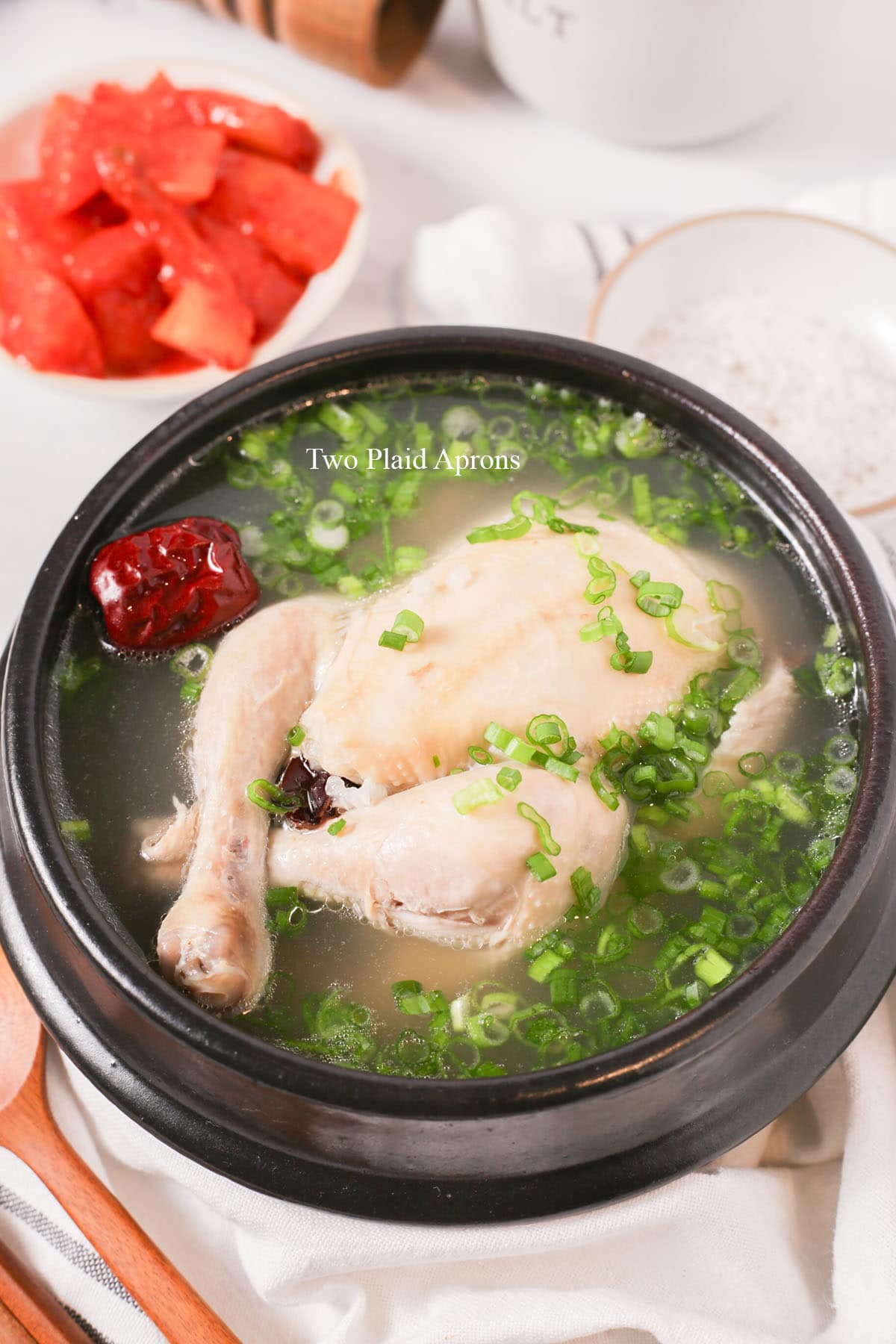
Ingredients needed for radish kimchi
Please scroll down to the recipe card for the ingredient quantities!
For the bulk of the radish kimchi:
- Korean radish - This is the star of this kimchi! Korean radish is usually a light green on the upper half and white on the bottom half. You can find it at Korean grocery stores and most Asian markets. Look for ones that feel smooth, firm, and and hefty for its size. This usually indicates that the radish is fresh and juicy. Also try to get ones that have more green than white. This usually means the radish is sweeter.
- Salt - We highly recommend using kosher salt or any coarse salt, but regular table salt can work for this kimchi as well. If using table salt and fine salts, use a bit less.
- Carrot - This is mostly for adding color and a contrasting texture to the radish kimchi.
- Asian chives - Also known as buchu. They really bring the FUNK to kimchi. Asian markets usually sell it in a large bunch, so if you have any leftovers, use it for pork and chive dumplings (they're really tasty!) or kimchijeon (savory kimchi pancakes). If you cannot find any buchu, feel free to use green onions instead or omit it all together.

For the marinade:
- Rice flour and water - These two ingredients are cooked into paste that makes the marinade stickier so that the marinade can adhere to the napa cabbage. You can use either regular rice flour (red bag) or glutinous rice flour (green bag).
- Gochugaru - Also known as Korean red pepper flakes. Make sure to get the coarse gochugaru. The fine version is too fine for kimchi. Also, some Korean markets offer different varieties of gochugaru that differ in spice level. You can choose the one that you prefer.
- Yellow onion, garlic, ginger - These are the base flavors of the marinade. They also add spiciness to the kimchi.
- Apple or Korean pear - Either fruit is good fine. They serve as a natural sweetener and provide some extra liquid for the marinade. If using apple, we recommend juicy apples, like Fuji.
- Fish sauce or saeujeot- The purpose of both ingredients is to add funk and saltiness to the marinade. In Korean households, saeujeot (fermented salty shrimps) is the more preferred option, but saeujeot has gone up in price and can be quite expensive. So a good fish sauce is a great substitute.
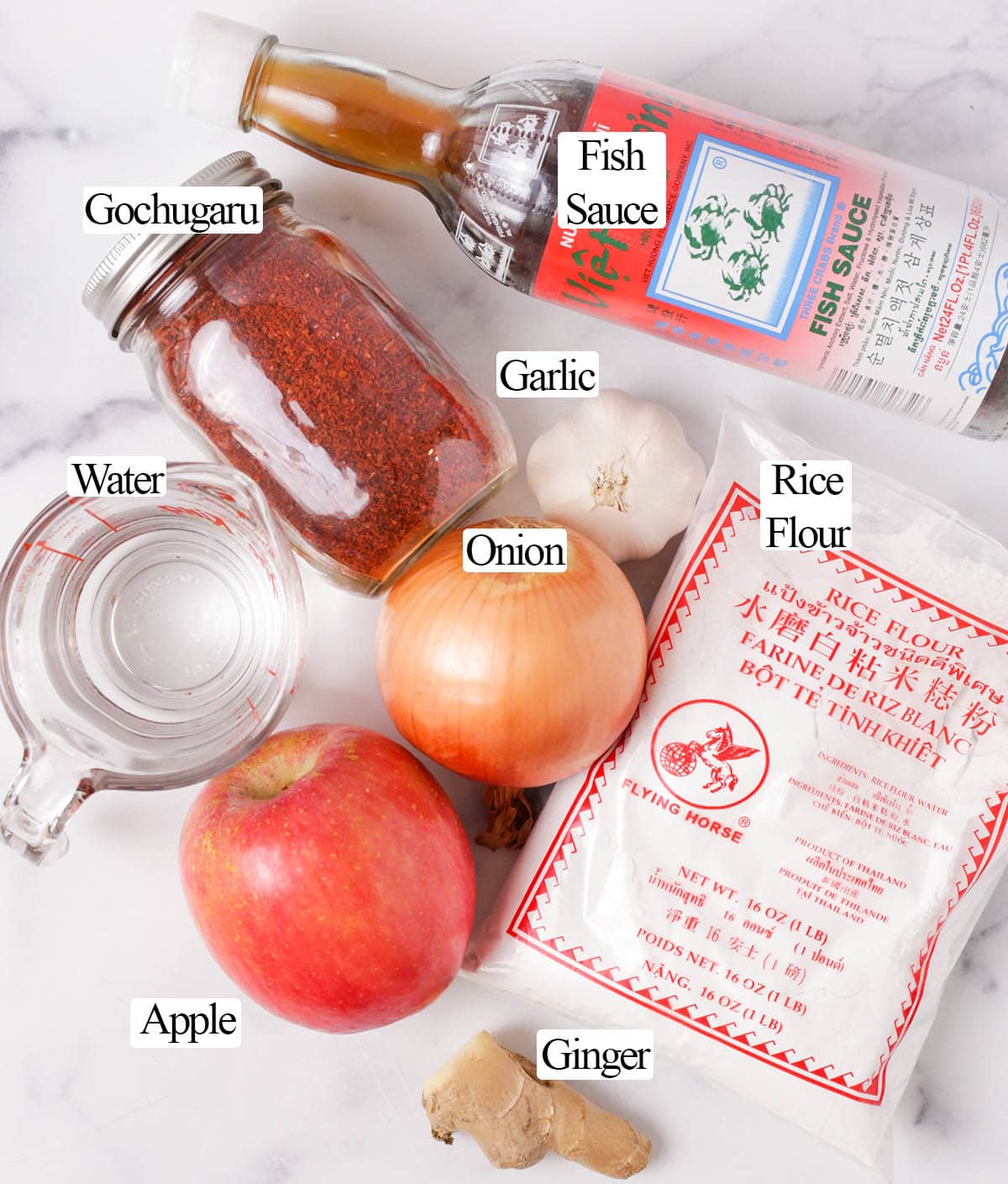
How to make radish kimchi (kkakdugi)
Please scroll down to the recipe card for the full recipe and instructions!
For the radish:
1. Prepare the radish. Wash, peel, and cut the radish into 1 inch cubes. To cut into cubes, you can first cut the radish into 1 inch slices, then dice them.

It is very important to cut the radish into similar sizes because it determines how long they will take to salt. It is inevitable that some pieces will be smaller since the radish is an oblong shape, but try to keep most of the pieces 1 inch cubes.

2. Salt the radish. In a large mixing bowl, sprinkle the salt over the cubed radish and mix well until the radish is evenly coated with salt. Set aside and let it salt for about 30 minutes as you prepare the marinade.

Make the marinade:
3. Make the rice flour paste. Whisk together the water and rice flour paste until well combined and no more visible lumps are left.
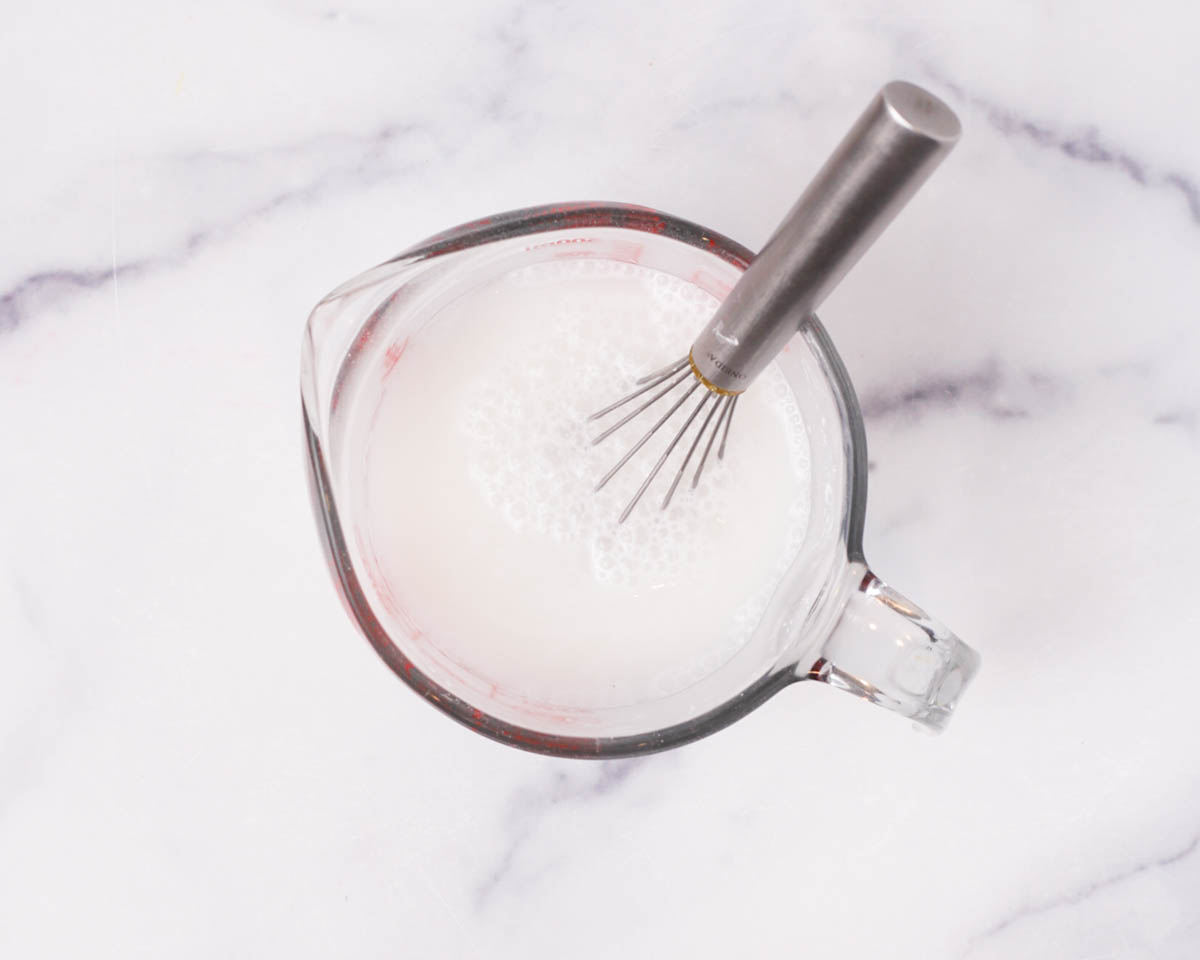
Pour the mixture into a nonstick pan or a sauce pan and cook over medium to medium high heat until the mixture thickens into a tacky, translucent paste. Once the paste starts to thicken, make sure to stir constantly, especially the bottom of the pan. Transfer the rice flour paste to a large mixing bowl and let cool.
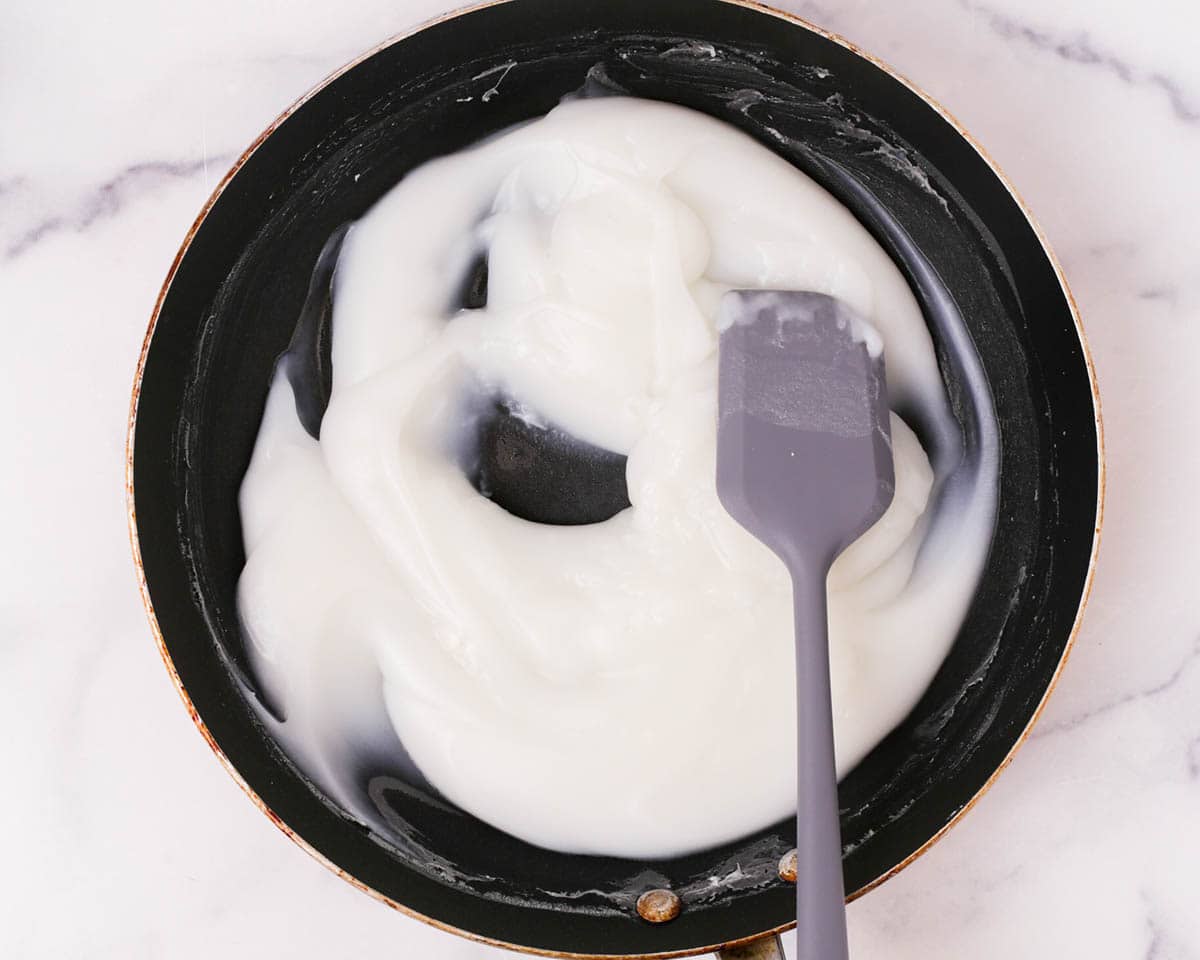
4. Make the marinade. Add the apple, onion, garlic cloves, ginger, and fish sauce (or saeujeot) into a blender, and blend until everything is smooth and well combined. Add half of the gochugaru and blend until it's as smooth as possible.
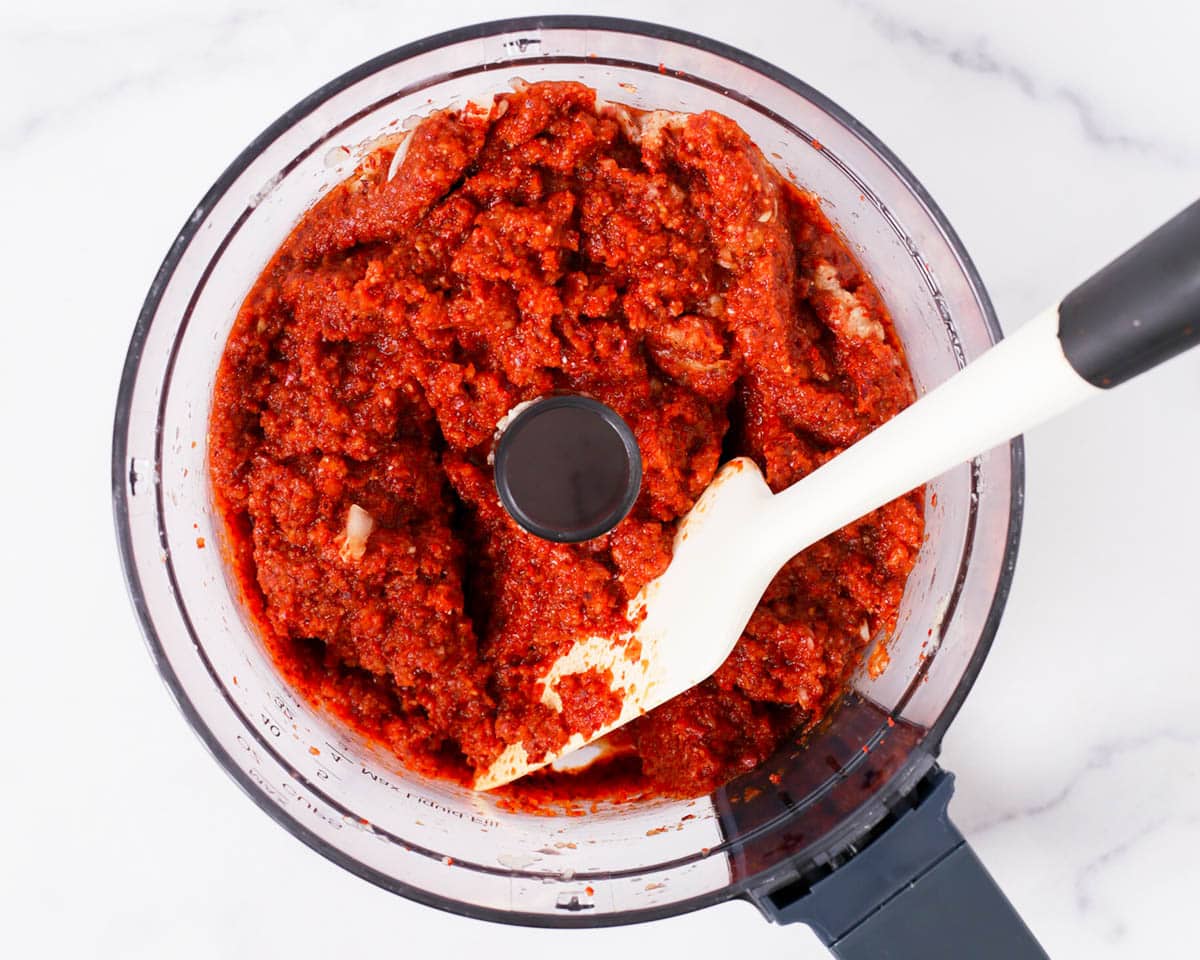
Transfer the mixture to the mixing bowl with the cooled rice flour paste, along with the rest of the gochugaru. With gloved hands, mix the paste until well combined. Then add the carrot and Asian chives and mix well. Set aside until needed.

Finish the radish kimchi:
5. Marinate the radish. When the radish is done salting, there will be a visible amount of liquid collected at the bottom of the bowl.
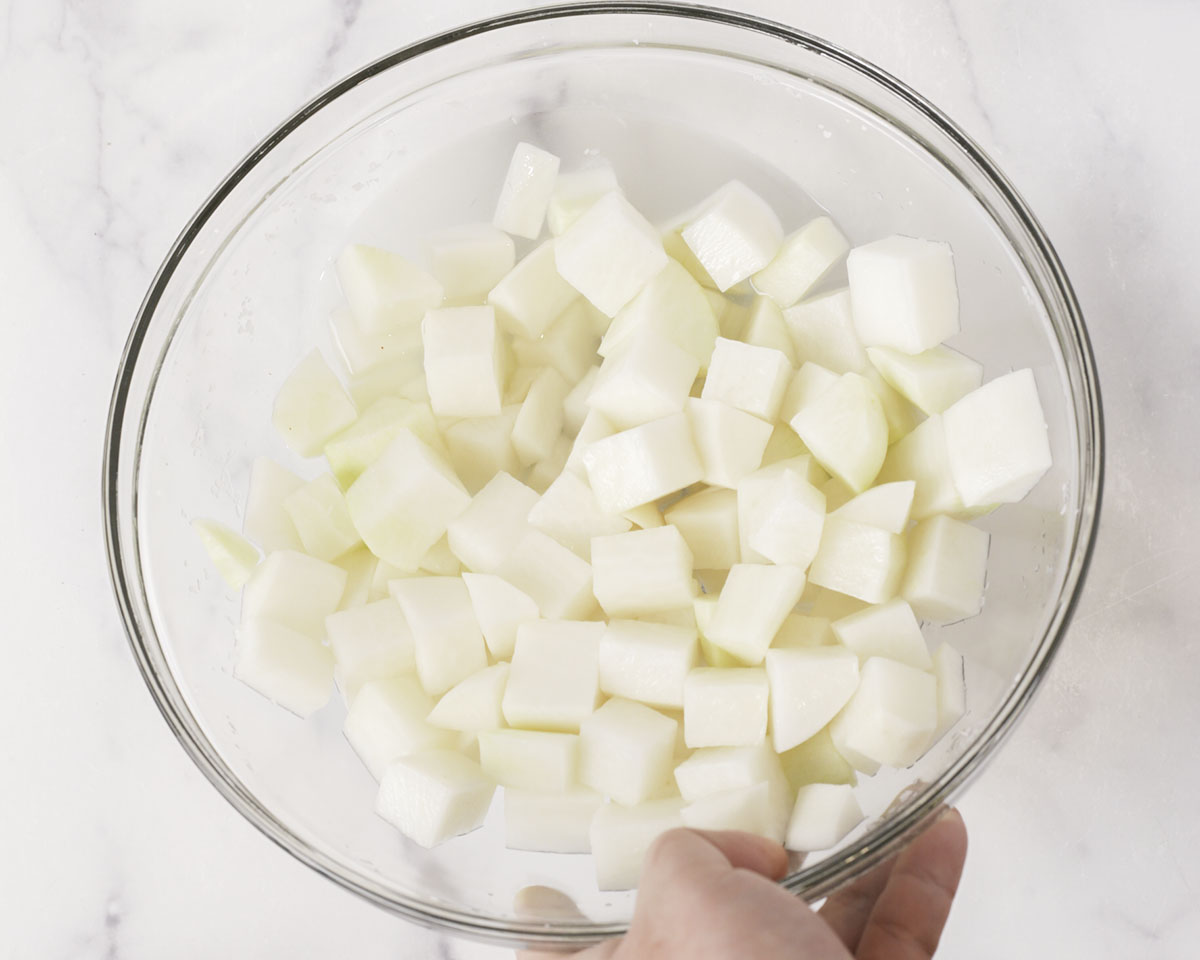
Drain the liquid then add the radish into the prepared marinade. Mix well until all the radish cubes are evenly coated.

6. Optional: Cover the bowl of radish kimchi and let it ferment at room temperature (like on your kitchen counter, out of direct sunlight) for 1 to 2 days. You'll see pools of liquid forming on to of the kimchi and that's totally normal. Simply mix the liquid back into the kimchi until well combined.
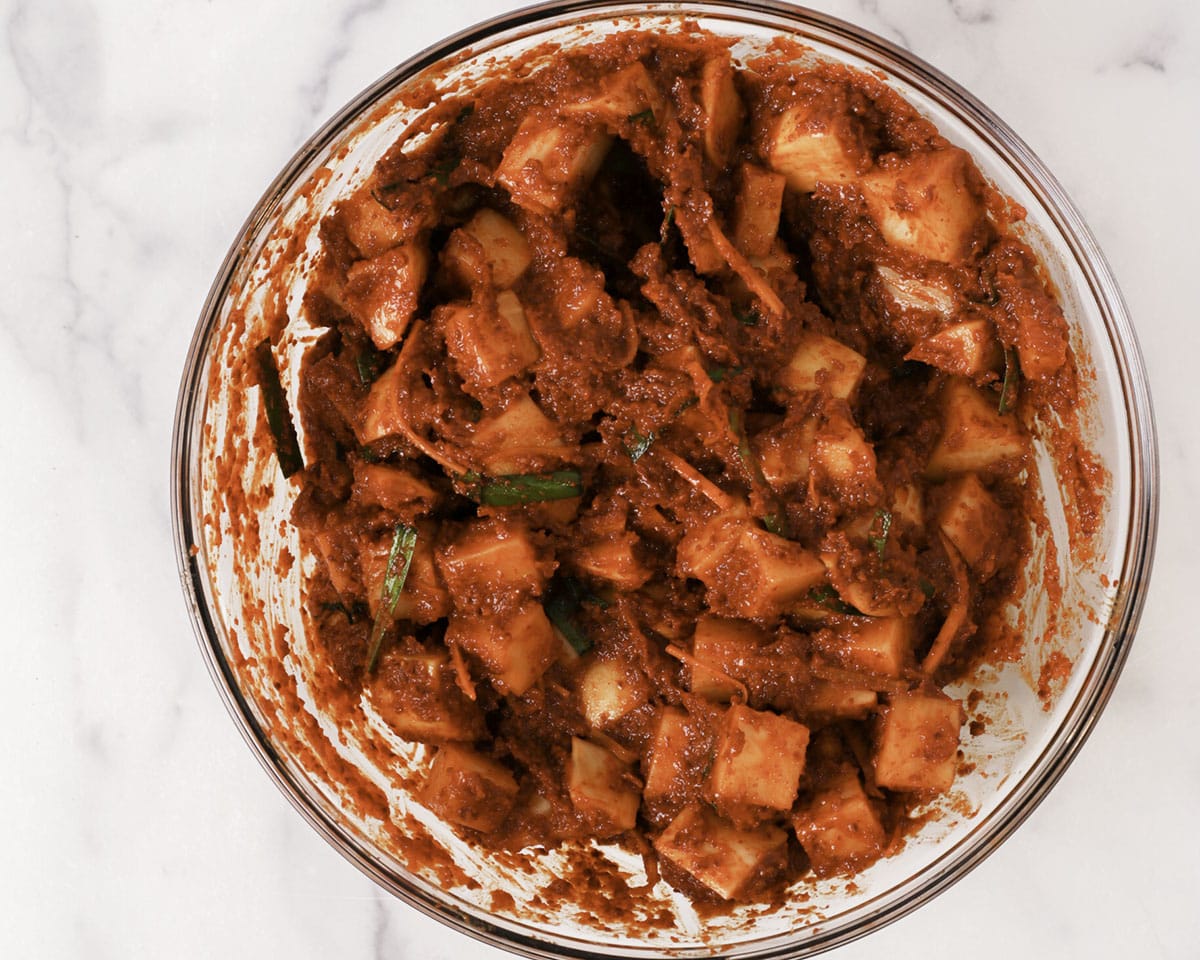
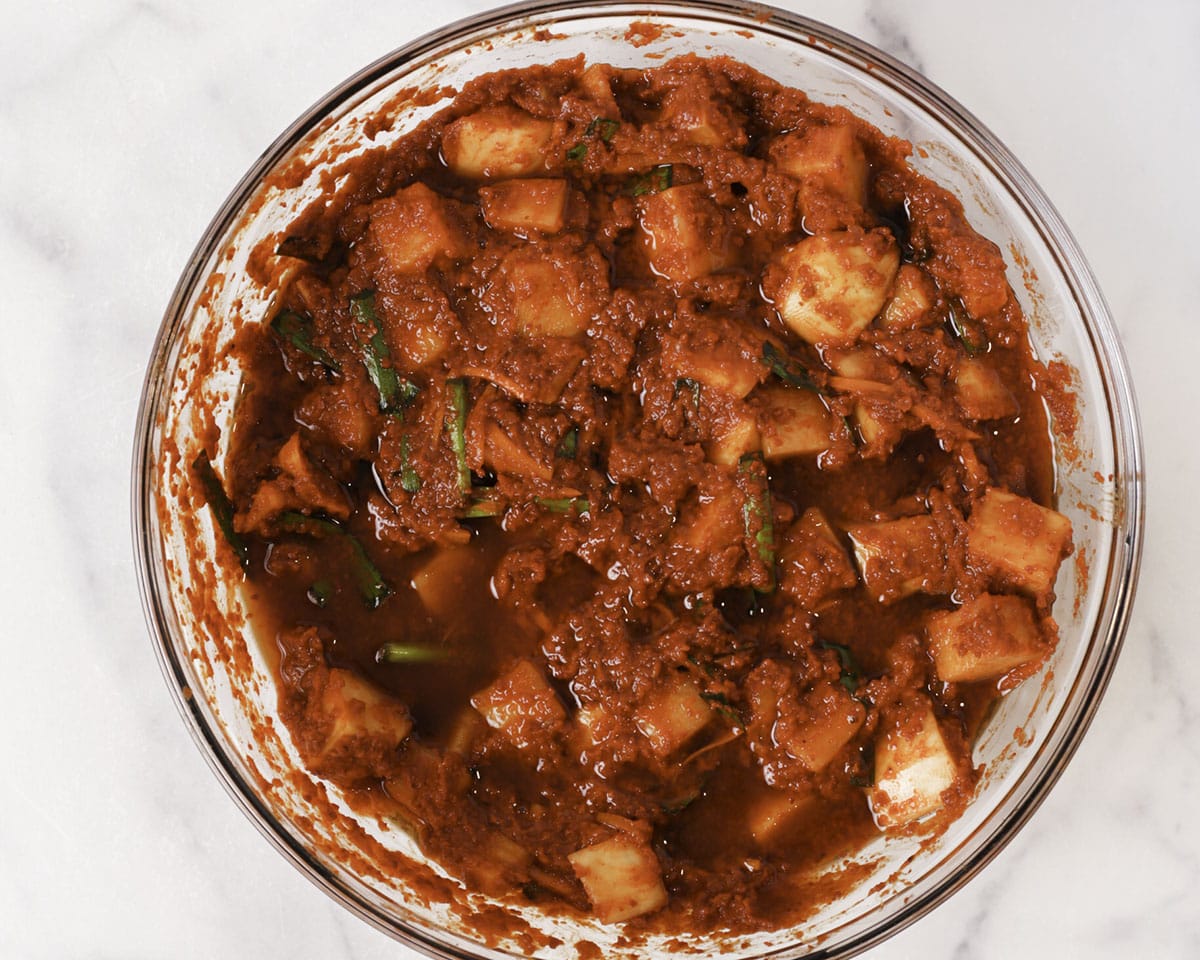
📝 Note: This step is completely optional, and its purpose is to help speed up the fermentation process since radish kimchi is usually enjoyed after it's more fermented and tastes tangy.
7. Store. Once the radish kimchi is complete, it can be enjoyed immediately or after fermenting. To store, transfer the kimchi into sterilized glass jars or BPA free plastic kimchi containers. Make sure it is tightly packed into the container and leave at least 1 inch of space between the lid and the top of the kimchi. This is to accommodate for the liquid and gas produce by the kimchi as it continues to ferment. Wipe down the lip of the container and keep it clean. Keep refrigerated.

Recipe tips
- Cut the radish into similar size cubes. This is especially important in terms of salting time. It's inevitable that some pieces will be smaller because radishes don't have perfect straight edges, but it's important to try and keep majority of the radish the same size.
- Don't rinse the radish after salting. Unlike regular napa cabbage kimchi, there's no need to rinse the radish after salting it. Simply drain the the liquid that's collected at the bottom of the. Also to compensate not rinsing the radish to get rid of excess salt, the marinade, compared to napa cabbage kimchi, will be on the less salted side. So when the radish is mixed into the marinade, it won't become overly salted.
- Allow the radish kimchi to ferment at room temperature for a couple of days to speed up the fermentation process. We recommend this because radish kimchi is usually enjoyed after it's fermented and tangy. If you prefer the flavor of freshly made radish kimchi, you can totally skip this and store it straight in the fridge.

Storage
Other than the initial couple of days where the radish kimchi is left to ferment at room temperature (optional), it should be stored in the fridge. It's best to store the radish kimchi in glass containers or BPA free kimchi containers. Stored properly and kept refrigerated, the radish kimchi can last 6 months or more. Also, make sure to always use a clean utensil with taking any kimchi out of the container.
Lastly, unless you have a fridge dedicated to kimchi, we highly recommend wrapping the containers of radish kimchi in a couple layers or plastic bag to prevent any kimchi smells from permeating your fridge. It will make anything and everything taste like kimchi.
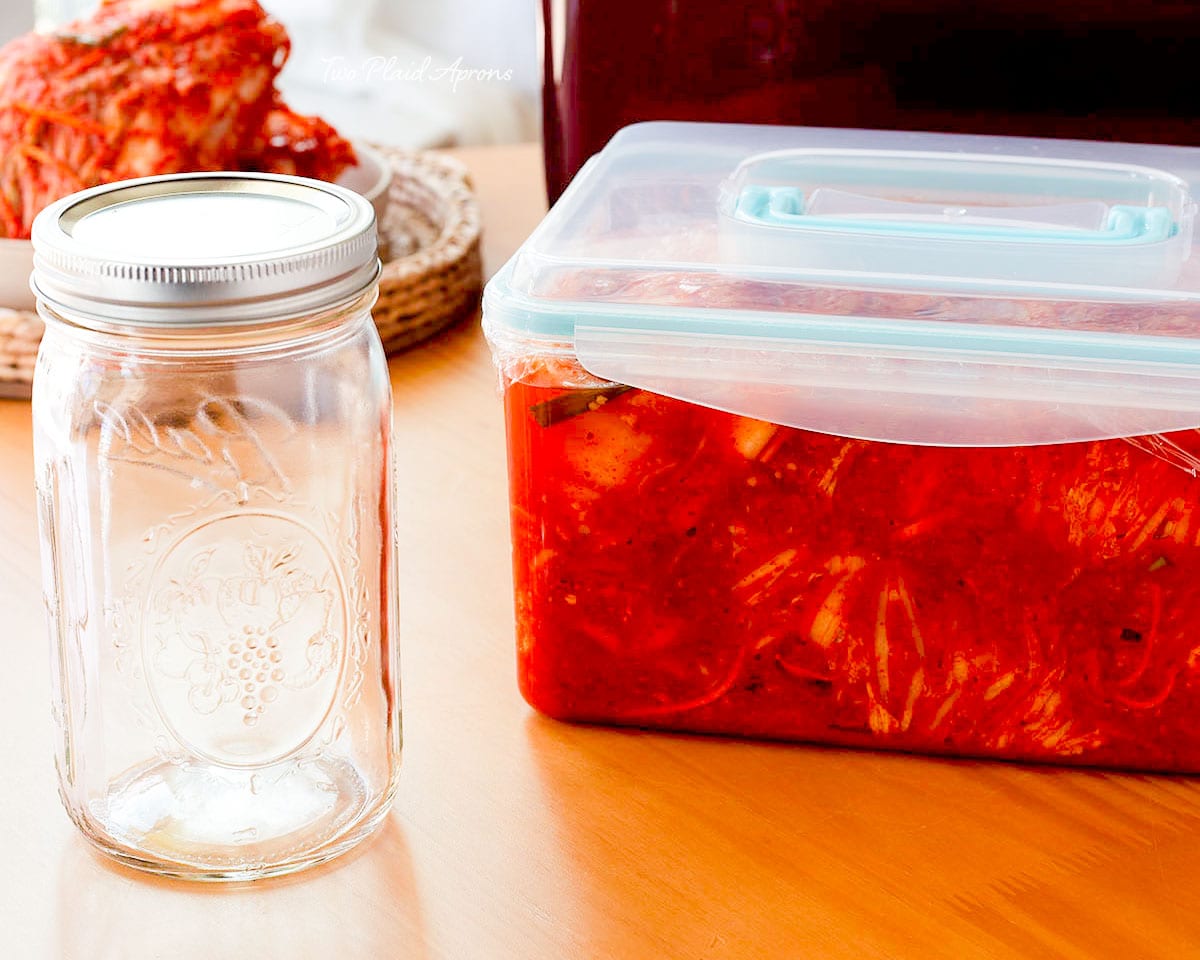
How to sterilize jars
The easiest way to sterilize your glass jars or canning jars for your is by boiling them. Just bring a pot of water to a boil and gently submerge the jars into the water completely. Let them simmer for 10 minutes for altitudes of 1000 feet or less and add an additional minute per 1000 feet.
Alternatively, if you are using those gallon size jars, you can place the jar upside-down into a pot or pan of simmering water. The jars do not need to be submerged. Let the jars steam for about 15 minutes.
🌟 Pro tip: Place a rack at the bottom of the pot or pan to prevent the jars from having direct contact with the heat and to precent the constant clanking.
Once they are done boiling or steaming, carefully remove the jars and let them cool and dry completely before using.

FAQ
Radish kimchi are usually served after fermenting, which makes it taste sour, bubbly, funky, and a little salty. Freshly made radish kimchi will still taste refreshingly sweet, garlicky, salty, and pungent.
Kimchi can technically be made with any veggies. However, we don't recommend using regular radish to make radish kimchi if you want authentic radish kimchi. Regular radish compared to Korean radish is much more peppery and less sweet. So the flavor of the radish kimchi would be quite different if using regular radish.
Radish kimchi, just like napa cabbage kimchi, can last quite a long time in the fridge and at the minimum 6 months. However, it all depends on whether it was properly salted, prepared and stored. If your radish kimchi smells sour or tastes sour and fizzy, that is totally normal. That means it is fermenting well, and the longer the kimchi ferments, the more sour it'll become. If the kimchi is showing signs of molding or discoloration (turning really dark), it would be wise to discard it.
Unfortunately, no. Gochugaru, or Korean red pepper flakes, have a very particular flavor that does not taste like regular red pepper flakes. If you can't find it at your local Asian market, you can usually order it online, like on Amazon. We do not recommend using regular red pepper flakes.
📖 Recipe
Radish Kimchi (Kkakdugi)
Ingredients
For the radish:
- 3 pounds Korean radish peeled and cut into 1 inch cubes
- ¼ cup Kosher salt
For the marinade:
- ¾ cup water
- 3 tablespoons rice flour regular or glutinous
- ½ large apple discard core and cut into smaller pieces (fuji, honey crisp, gala) *see notes for Korean pear
- ½ large yellow onion peeled and cut into smaller pieces
- 10 cloves garlic peeled (about 1.5oz/40g)
- 1 inch ginger peeled and cut into smaller pieces
- 2 tablespoons fish sauce or 3 tablespoon saeujeot per 2 tablespoon fish sauce *see notes
- 1 cup gochugaru (coarse) divided (also known as Korean red pepper flakes)
Additional veggies for the radish kimchi (optional):
- 2 ounces carrots peeled and julienned
- 1.5 ounces Asian chives cut into 1 inch pieces (discard about 1 to 2 inches of the tough stem)
Instructions
Salt the radish:
- After the radish has been washed, peeled, and cut into 1 inch cubes, place them into a large mixing bowl and mix with salt. Make sure all of the radish cubes are evenly coated. Set aside and let the radish salt for about 30 minutes. Midway through, give the radish a mix.*It is very important that the radish is cut into fairly even size cubes because the size affects how long the radish will take to salt. It is inevitable that some pieces will be smaller, that is perfectly fine. Just try to keep most of the radish cubes about 1 inch.*
- After 30 minutes, there will be a considerable amount of liquid at the bottom of the bowl. Take a regular size cube of radish and taste it to see if it's salted enough. The radish should still have a faint, natural sweetness, but should taste like it's just seasoned. If not, give the radish a mix and let it salt for another 15 to 30 minutes and taste again. If it is salted enough, move on to the next step.
Make the marinade:
- While the radish is salting, let's make the marinade. First, make the rice flour paste by whisking together the rice flour and water until well combined. Transfer the mixture to a pan or saucepan and cook over medium to medium high heat, stirring occasionally. Once the paste starts to thicken, stir constantly until a thick, slightly translucent paste forms. Transfer to a large mixing bowl and let cool.
- In a blender, add the apple, onion, garlic cloves, ginger, and fish sauce (or saeujeot). Blend everything together until the mixture is well blended. Add half of the gochugaru to the mix and blend until well combined and as smooth as possible.
- Transfer the mixture to the mixing bowl with the cooled rice flour paste, along with the rest of the gochugaru. With gloved hands, mix the paste until well combined. Then add the carrot and Asian chives and mix well. Set aside until needed
Finish the radish kimchi:
- Once the radish is salted enough, drain the excess liquid that has collected at the bottom of the bowl and add all of the radish into the prepared marinade. No need to rinse. Mix well until all the radish cubes are evenly covered.
- Optional: Although radish kimchi can be enjoyed freshly made just like napa cabbage kimchi, most prefer it sour and fermented. This step helps to speed up the fermentation process before storing.Cover the bowl with cling wrap and let the radish kimchi sit out at room temperature (like on your kitchen counter, out of direct sunlight) for 1 to 2 days. You'll begin to see pools of liquid forming in the bowl and that's totally normal. Once ready for storage, give the radish kimchi a thorough mix to incorporate the liquid.
- Pack the radish kimchi into sterilized glass jars or BPA free plastic kimchi containers. Make sure to pack the the radish kimchi tightly into the container, but leave about at least 1 inch of space between the top of the radish kimchi and the lid. As the radish kimchi ferments, it will release juices and produce gas, so the extra room will help prevent overflowing.
- You can enjoy the radish kimchi right after making for more refreshing, sweet radish and stronger flavored marinade. If you prefer the classic, tangy and bubbly radish kimchi, you can let it ferment longer before enjoying.
Notes
- Fish sauce - Traditionally, saeujeot (Korean fermented salty shrimps) was used as the funky, salty seasoning for the kimchi marinade, but these days it has gotten quite pricey. So we opted to use fish sauce instead. If you'd like to use saeujeot instead, use about 1.5-2 tablespoons of saeujeot for every 1 tablespoons of fish sauce. Feel free to taste and adjust as needed.
- Apple or Korean pear - We recommend using juicy sweet apples, as they will add needed moisture to the kimchi marinade and sweetness. You could also use Korean pear instead. If using Korean pear, we recommend peeling the outer skin.
- Make sure to wear disposable gloves when working with the marinade. It can stain your hands and clothes easily.






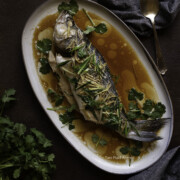




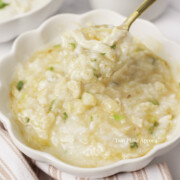






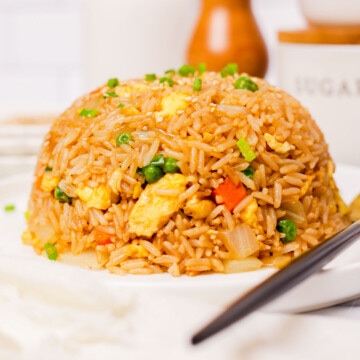
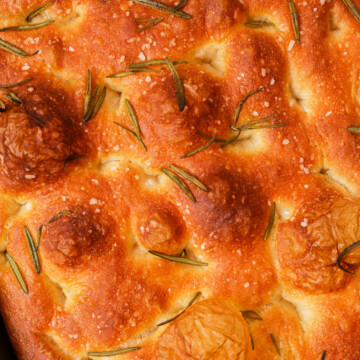
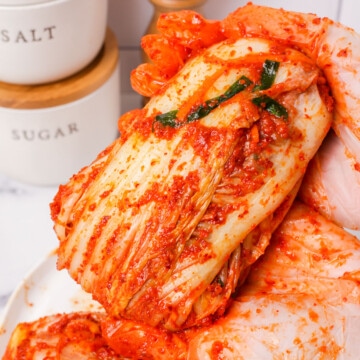

Comments
No Comments